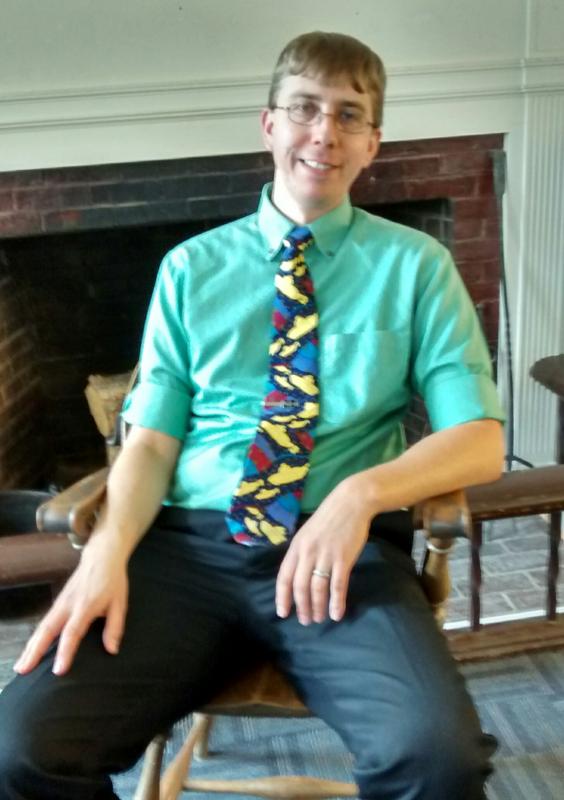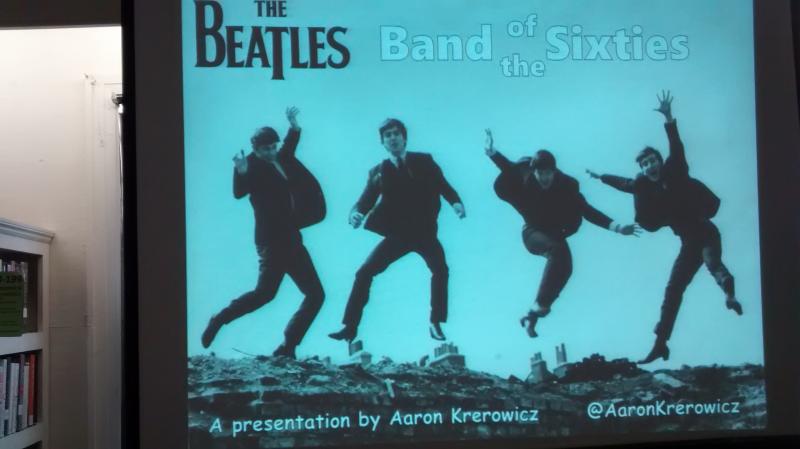Beatle scholar educates audience at Literary Lunch
Last Friday’s October Boothbay Harbor Memorial Library’s Literary Luncheon hosted Aaron Krerowicz, the world’s only full-time professional Beatles scholar. Krerowicz, who was born 15 years after the Beatles broke up in 1970, has an interesting take on all things Beatle.
“There are Beatle historians and Beatle biographers who have written books with fans in mind,” Krerowicz said, “but not many people analyze the music, and none of them do it full time.”
In 2011, Krerowicz, whose love for the Beatles was passed down by his father, was awarded a research grant through the University of Hartford to study the band. While he may have become a university professor, he was not drawn to academia. Mixing his knowledge of the Beatles with his musical education, Krerowicz couples musical analysis with lecture, using sound and visuals, including musical scales and charts to “… put together academic presentations for non-academic audiences.”
Krerowicz hails from the Indianapolis, Indiana area. He has developed about 34 programs featuring the Beatles and their music. The presentation on Friday, “The Beatles: Band of the Sixties,” covered the Beatles phenomenon from 1960 in Hamburg, Germany, to 1970, when the Beatles broke up.
“There was no one else like them,” Krerowicz said. What made them unique? According to Krerowicz, their early days in Hamburg set their course. “They played for five and a half hours a day in seedy bars,” Krerowicz said. “With that kind of schedule, they had to have stamina. That much work either makes or breaks you. They became very good, and they learned how to hold a rowdy crowd with their presence.”
Krerowicz demonstrated exactly what sets him apart from fan-based historians and writers by using musical scales to demonstrate the Beatles’ use of techniques like “oblique motion,” where one singer sings different notes, while the other sings the same note throughout a musical line. “Please, Please Me” is an example of this technique, something Beatle influencers The Everly Brothers also used. Krerowicz also showed viewers a chart he put together labeled “Retrospective,” “In Between” and “Anticipatory” to show the Beatles’ growth as artists. “Retrospective” refers to early work, which sounds similar to their influences. During their “In Between” phase, Beatles lyrics and music became more original and introspective. The “Anticipatory” phase listed sophisticated songs where technology and orchestral music combined to create a sound of their own.
Krerowicz also demonstrated the similarity of earlier songs to later tunes by playing them both together — for example, “It’s Only Love” and “Being in the Benefit for Mr. Kite” sound remarkably alike when played simultaneously, although the first is simple and the second is fraught with calliope and electronics. Krerowicz mentioned that his website, www.aaronkrerowicz.com, contains short videos called “The Beatles Minute” that may interest music fans curious about what he does.
The Nov. 4 Literary Lunch features Kate Christensen, author of How to Cook a Moose.
Event Date
Address
United States




























